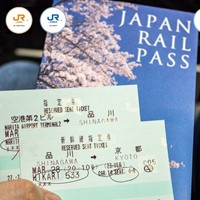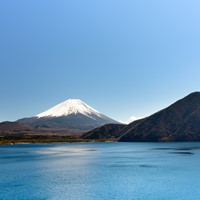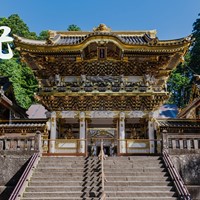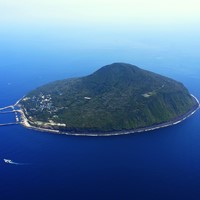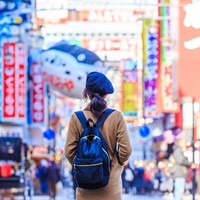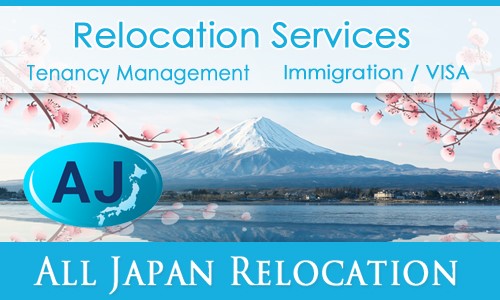3 Days in Nagoya, Japan: Exploring Culture, Festivals, Food, and Local Life

This article is contributed by Graham Hill.
I had been to Nagoya before, but only once; a quick stop-over for lunch, enroute by shinkansen from Tokyo to Kyoto. That day's activity included a fantastic meal on an upper floor of the Nagoya Castle Hotel; we could see the castle from our seats. It was also my first exposure to teppanyaki cooking. While that was a remarkable first taste of Nagoya, I certainly hadn't seen enough to have a real sense for the potential of the city.
Earlier this year I began contributing some writing to a guide for visitors to Nagoya. In my research, I learned Nagoya is an old city, with a rich history of shrines and swords and shoguns. I learned the city has a lot to offer, from industrial activity to tourism. And yet my reading could only take me so far - I wanted to see for myself what the city of Nagoya has to offer.
When I learned that Nagoya hosts a big celebration called the Port Festival each year in July, I was inspired to set up a three-day trip; I would document the festival, and spend the remaining time exploring, taking pictures, and soaking up the local scenes of summer in the city.
In the paragraphs below, I share some of what I saw along my path of three days in Nagoya.
Nagoya's Centrair International Airport
Day One in Nagoya began with an easy flight that brought me into Chubu Centrair International Airport, commonly called "Centrair." Nagoya's Centrair receives visitors from all over Japan, as well as international visitors - most often from the nearby Asian countries of Korea, China, and Vietnam.
Centrair Airport has at least two special features that stood out to me as I arrived:

First, there is a flight deck upstairs (at the top of Terminal 1) where you can walk out toward the runway and watch the planes arrive and takeoff. I had never had a chance to be that close to a runway before, and I was excited to see it. I wasn't alone; there was a crowd of 20 or 30 other visitors and photographers watching the planes touch down, or lift off into the sky.
The second attraction was a surprise, and was recommended to me by one of the hosts at the visitors' counter:

There is an area of Centrair Airport called "Flight of Dreams," which is like a food court, but in a huge aircraft hangar that surrounds a full-size jet. You can walk right up to it, and the scale is astounding.
Inside Flight of Dreams there are several shops, including a big Starbucks with a comfortable lounge where you sit "eye-level" with the cabin. For kids, or anyone with a child-like curiosity, it is great way to spend an unusual hour (or two) waiting for a flight.
Nagoya Station
From Nagoya's Centrair Airport, I made the relatively easy commute (on the μ Sky Limited Express) to my hotel near Nagoya Station, in Nakamura Ward.
Nagoya Station is the biggest station in Nagoya; a sprawling, massive station, with the interconnecting trains of the JR Line and the Nagoya Subway, interwoven with department stores, commercial office space, and a hundred different places to find food or drink.
As I stepped out of the station to the west, I walked out and saw a familiar Bic Camera. Nagoya is its own city, but has many of the quintessential aspects you'd expect from any big city in Japan.
Nagoya Architecture
I had an appointment with a language school in Nishi Ward that same day, which gave me a chance to explore some less-touristy parts of Nagoya. On my way to my appointment, I walked some suburban neighborhoods, and had a chance to see some of the representative architecture in the city.

Most modern construction in Japan has very few details; the current style of Japanese housing is often entirely square, focused on earthquake safety, minimizing cost, and the extensive use of concrete. Because builders and owners want to maximize usable space, features like eves are omitted to bring the walls closer to the property line. Houses like the one pictured here show some of the character of an earlier time in Japanese architectural tastes.
That house is not "traditional," but it not a "modern concrete cube" either. There are telltale features in this period of Japanese architecture with some cultural richness on display.
I love the little potted garden spilling out into the street. Houses like these have character.
Nagoya Castle and Meijo Park
As my next stop on this day, I made a visit to the location of Nagoya Castle. While the castle itself has been written about many times, I'll take this opportunity to talk about the greater park that encompasses the castle. The castle's surrounds themselves can make for an excellent destination.

I walked up to the castle from the south west, from Sengen-cho Station. Passing the castle, I peered down into the castle moat, walking along the beautiful stone walls that line the path as I wandered toward the East Gate.
On that walk, I was surprised to discover the Dolphin's Arena (home of the Nagoya Diamond Dolphins basketball team). I then made my way around the east side of the park, along wisteria covered walkways, and into Meijo Park itself (on the north side of the castle grounds). After watching a father and son engrossed in some baseball practice, I made my way to the northern border of the park where I ran directly into Nagoya's AG Arena.
It would be easy to say more about that area: this borderland where Nishi Ward, Naka Ward, and Kita Ward come together, is a central and important part of the city, with so many diverse attractions.
Atsuta-Jingu Shrine
Delving deeper into the cultural experience of my trip, my next stop was the Atsuta-Jingu Shrine, in Atsuta Ward.
Shrines and temples in Japan are not necessarily features of tourism, they are primarily places of reverence and ritual. Nagoya's shrines are popular features of daily life in Japan, and do also attract many visitors and tourists.

Spanning an entire city block, the Atsuta-Jingu Shrine sits nestled between four train stations; one for each of its trapezoidal sides. Inside, it is something like a park; lush with very old trees, and laid-out in a massive scale, dominated by humbling, enormous gates.
As it was July in Nagoya, (even at close to 6 PM) it was hot. But inside the shrine, under the canopy of trees, there was a cool serenity - an incredible contrast to the urban landscape beyond the shrine. Inside, the wide, walkable paths offer something older, something properly Japanese, and less bound by time.
Shopping in Nagoya
Day Two began with a quick trip to see Endo-ji Shotengai - what is described as a "shopping street." I suppose I was expecting something like a "fish market" - lots of stalls, and lots of shoppers, maybe locals, maybe tourists.

What I found instead was a quiet, subdued "shotengai" (these covered "shopping streets" are typically more hectic and more commercial than this one) which was getting ready for their local Tanabata Festival. Using strips of wood (or maybe bamboo?), and a paper Mache technique, large characters were hanging, in various stages of construction, from the structure that covers the shopping path.
For some contrast to the local charm of the shotengai, there is plenty of high-end shopping in Nagoya. Nagoya has several shopping malls, department stores, and street-level shops including an Apple store, a Nike store, and more. The two best areas for shopping in Nagoya are the areas near Sakae Station and Nagoya Station.
Nagoya Station itself is a collection of malls and stores, connected by underground paths (that are also lined with shops). Just across from the station's Meitetsu Department store is the Midland Square shopping mall.

Midland Square is focused on big luxury brands like Louis Vuitton, Cartier, and Dior. There are also specialty show rooms for Lexus and Toyota (located on the first floor).
If you're ready for a break from all that shopping, I recommend you stop into the Dean and Deluca shop (on B1) for a New York City-inspired, fresh-baked berry muffin, or (if you can get it) a slice of their chocolate bread (one of my personal favorites).
Nagoya Chunichi Dragons
Later on Day Two, it just so happened that the local Nagoya baseball team was playing a home game.

In Nagoya, the Chunichi Dragons host home games at the Vantelin Dome. On this particular day, the Dragons played against the Yokohama Baystars. Final score: 0-1.
Baseball fans that are familiar with the Los Angeles Dodgers may notice some faint similarities in the branding.

Nagoya Port Festival
The timing of this particular trip to Nagoya was based around the Port Festival, held in Nagoya this year on July 21, 2025. I have not attended many festivals in Japan, and I expected there would be a big crowd... maybe thousands of people?

There were, in fact, "thousands" of people. Hundreds of thousands of people.
According to the city of Nagoya, over 330,000 people attended this year's festival. If the total population of Nagoya is only 2.3 million residents, that means greater than 10% of the population of the city attended this year's event - an incredible crowd of people, all pressed together along the few blocks that lead to the Nagoya Garden Pier.

The day-long celebration (held on the Umi no Hi national holiday) included taiko drumming, a parade through the neighborhood, hundreds of stalls selling food and drink, all of which culminated in a demonstration of fireworks launched over the bay.
Osu Kannon
Day Three began with a stop at Osu Kannon, a color-clad Buddhist temple in Naka Ward, in the heart of central Nagoya. One minute you are on the street passing another Family Mart convenience store, and in the next moment you are in a room with dozens of brass Buddhas.

The structures are not only beautiful, but the smell from the incense burning at the door of the temple, and the sounds of gongs and chanting, create a multisensory experience.
From the grounds of the temple, you can see large images of red-faced warriors installed on the side of a neighboring building. Walking that direction, and beyond the temple grounds, you can step into Niomon (warrior gate) Street, one of several shotengai shopping streets in the Osu shopping district.
Nagoya University
Later that day, on the way to see the Higashiyama Zoo, I took a route that took me up from Nagoyadaigaku Station, into Nagoya University; specifically into a beautiful student union full of university students deep in their books, socializing, or just sneaking an afternoon nap.

Nagoya University has produced several of Japan's Nobel Prize winners. Today, the school is home to something like 16,000 students.

There are several universities throughout Nagoya. In the Chikusa neighborhood alone, Nagoya University shares the neighborhood with the Nagoya campus of Nanzan University, as well as the private woman's college Sugiyama Jogakuen University.
Higashiyama Zoo and Botanical Gardens
Pressing on from the university, I visited the Aichi International School in Meito Ward, toward the east gate of the zoo.
It was late afternoon, and the zoo was closed for the day, but the walk brought me onto a path that was surprisingly forest-like for the heart of the city.

After spending so many hours on the sidewalks and subway systems in Nagoya, the quiet moments on the path were a refreshing part of the day's adventure.
Part of that walk - like so much of my time in Nagoya on the summer days of this trip - was accompanied by a multi-layered chorus of cicadas (called "semi" せみ), singing in harmonic waves, rising and falling together as I walked along.
Nagoya Nightlife
Nagoya is a big city, and the sense of nightlife in Nagoya felt alive and well. One evening, I stumbled into the first floor of a building, lined with small restaurants.

In Japan, a collection of small bars and eateries in an "alleyway" is called a yokocho (横丁). You can find these "food alleys" all over Japan, often outdoors. In this case, this particular yokocho was located indoors, in the Naka Ward of Nagoya. I arrived at 8 PM on Tuesday night, and the narrow passage was crammed with guests eating, drinking, and socializing.
On my other evenings, out and about in the city, I passed nightclubs, innumerous izakayas and bars, and the occasional crowd of locals drinking outside a convenience store.
One night I went out for dinner on a street in Higashi Ward where every restaurant on the block featured a different kind of yoshoku (洋食, western food). First there was a Spanish restaurant, then one that served French food, and finally, Pizzeria Quarantuno 41 (a classic Napoletana pizza restaurant).
Nagoya has a bit of everything.
Thanks Nagoya
Nagoya is a robust city, with so much to offer. I was ambitious and I planned well. Even with three days, each with a packed itinerary, there is so much more to see. It was a great adventure, and a wonderful trip.
About the Author
Graham Hill is a writer and traveler passionate about exploring Japan’s cities and culture. He shares his experiences and insights through detailed travel guides and stories. Learn more about him at grahamwordy.substack.com.
